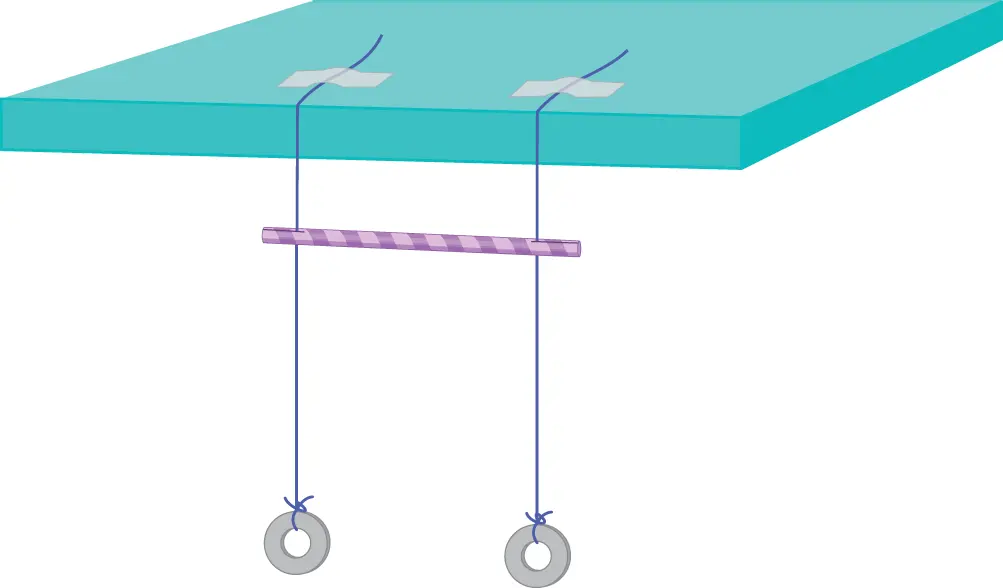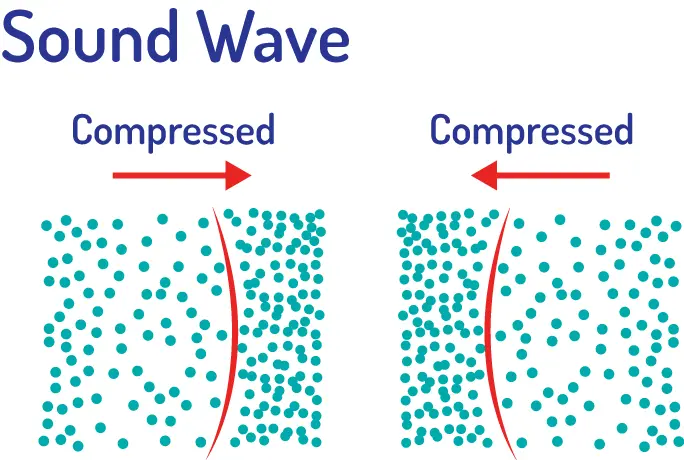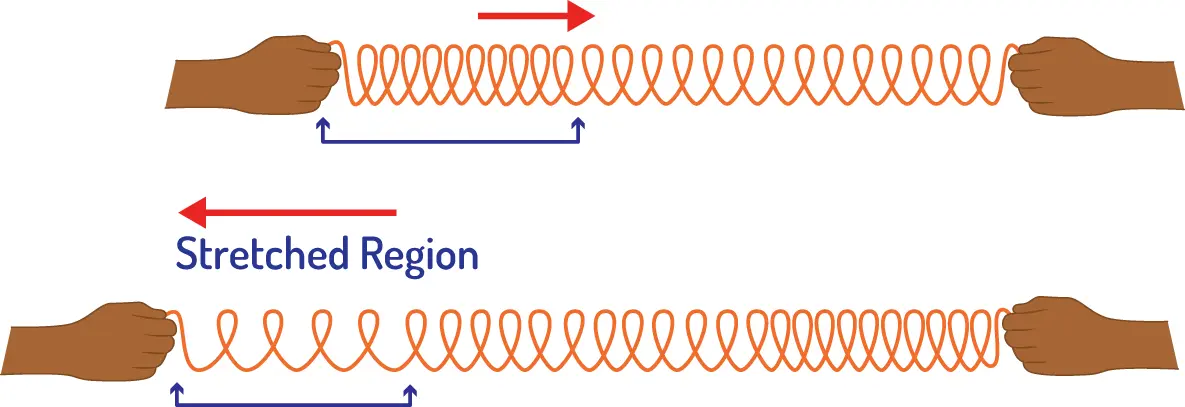Frequency ishow many times an event occurs in a specific amount of time, such as the back and forth swing of a pendulum. A pendulum is an apparatus with a hanging weight from a fixed point that can move freely back and forth. A string with a washer attached to the end is one example of a pendulum. The weight on a pendulum is called the bob. Each forward and back swing of the bob on a pendulum is counted as one cycle.
The frequency of a pendulum is determined by counting the number of cycles, the back and forth movements, the pendulum bob makes in a one-second interval. The length of the cable or string attached to the bob determines the pendulum's frequency. The longer the string, the lower the pendulum's frequency.
See for Yourself
Materials
string, 18 inches (45 cm)
washer with a hole, or any comparable weight
tape
1 Tie one end of the string to the washer.
2 Tape the free end of the string to the edge of a table. Leave part of the end of the string free. This end of the string will be pulled to shorten the string.
3 Pull the washer to one side and release it. The washer should freely swing without touching anything ( Figure 1). FIG 1
4 As the washer swings, slowly pull the end of the string to shorten it. As you shorten the string, observe the change in the frequency of the pendulum.
As the length of the string is shortened, the distance the bob swings gets shorter. Thus, it takes less time for the bob to swing back and forth. This means that, given the same interval of time, a shorter pendulum will swing back and forth more times than a longer pendulum. So, there is a relationship. The frequency of a shorter pendulum is higher than the frequency of a longer pendulum.
Coupled pendulumscan be formed by two pendulums suspended from a common support. In this setup, energy from one swinging pendulum can be transferred through the medium connecting the two pendulums. As a result, one swinging pendulum will transfer energy to the second pendulum, starting it swinging. As the energy is transferred back and forth, one pendulum stops and the other swings, reversing the energy transfer. Through careful observation, a prediction can be made when one pendulum will stop and the other one will start. It looks a bit magical but it's not. It's all about the transfer of mechanical energy.

FIG 1
See for Yourself
Materials
string, 2 × 8 inch (20 cm) pieces
tape
ruler
scissors
straw
2 washers with holes, or any comparable weight
1 Tie one end of each string to a washer.
2 Tape the free end of each string to the edge of a table. The strings need to be about 6 inches (15 cm) apart. The string lengths for both pendulums need to be the same.
3 Cut 6 inches (15 cm) from the straw, and then cut short slits in both ends of the straw.
4 At about 2 inches (5 cm) from the tops of the string, attach the straw. The string should slide into the slits on the ends of each straw. Make sure that the straw is parallel with the table edge and the lengths of the pendulums below the straw are equal.
5 Pull one of the pendulums toward you a short distance and release; it should swing under the table. Observe movement in both pendulums.
Pendulums of the same length have the same natural frequency, which is the number cycles or the back and forth movements the pendulums would make in 1 second.
When only one pendulum is pulled and released, the end of the attached straw also moves back and forth with the same frequency. With each swing, the straw is giving the second pendulum small tugs. With each tug, the second pendulum moves a little higher. This happens at the expense of energy being transferred from the first pendulum. Thus, one pendulum slows down as the other pendulum swings higher. At this point there is a reverse of energy transfer. One might wonder why this back and forth transfer doesn't continue forever. The swinging pendulums are at the same time losing energy to other forms of energy, including heat and sound (air vibrations). Eventually, both pendulums will come to a standstill.
Sound wavestravel through air in the form of waves called longitudinal waves. Sound waves transport energy as they travel through a medium. Sound waves are produced when an object, such as a plucked guitar string, vibrates. On one side of the string, the air molecules are compressed, or squeezed together, creating a high-pressure area. Areas of high pressure are called compression. At the same time on the opposite side of the string, a low-pressure area is produced allowing the air molecules to spread out, which is called rarefaction. Figure 1models the compression and rarefaction of air surrounding a vibrating string that is represented by the red line. It is important to note that the air molecules around the string are moving back and forth but they never move far. Instead, each time the air molecules are compressed, they hit against other air molecules pushing them farther away from the string. The sound wave continues to move away from the source of the sound, the vibrating string, in all directions. Sound waves continue to move and bounce off surfaces until there is no more energy. The compression and rarefaction of longitudinal waves can be demonstrated with a Slinky.

FIG 1
See for Yourself
Materials
Slinky
1 Lay the Slinky on a table.
2 Hold the ends of the Slinky with your hands and stretch the Slinky so that it is about 2 feet (60 cm) long.
3 Holding one end of the Slinky stationary, push the opposite end inward about 4 inches (10 cm) and then pull outward again ( Figure 2). Observe the movement of the coils in the Slinky.

FIG 2
Compressing the coils models the compression of air molecules when a vibrating object pushes on air molecules. As the object is pushing air together on one side, at the same time, on the opposite side, the air molecules are spreading apart. Stretching the coils models the rarefaction of air.
The compression of the coils sends a visible wave down the Slinky, modeling the way the air molecules behave when bumping into the next air molecules, and the next, and so on. At the end of the Slinky, the waves are bounced back. This back and forth movement continues but it will slow down over time until stopping, due to a loss of energy. The coils compress and stretch apart as the wave passes through the coils. At the secured end, the wave bounces back, sending the wave in the opposite direction. The person holding the end of the Slinky can feel the energy of the modeled sound wave because the last coil pushes against their hand. This back and forth movement occurs several times. Likewise, sound waves also bounce off of objects. Sound waves are absorbed by soft surfaces and reflected by hard surfaces. Figure 3compares compression and rarefaction in the Slinky to a sound wave in air.
Читать дальше















